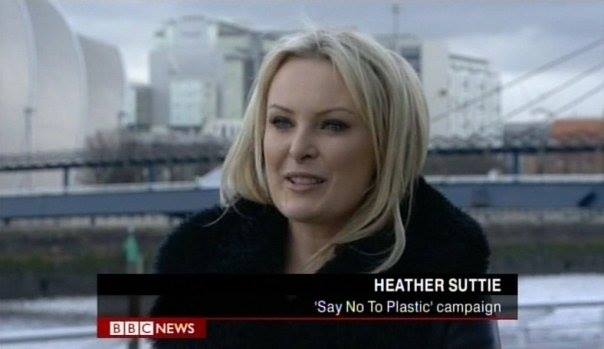I carry a reusable cutlery set, a silicone cup for hot drinks and have stopped using make-up wipes. Like many of us, I try to reduce the amount of plastic waste I create in my daily life. But there’s one source of single-use plastic I overlooked: contact lenses.
The plastic crisis remains despite the progress we've seen and genuine effort from people across the world. Eight million tonnes of plastic enter the sea every year, enough to circle the world four times over. This pollutes our beaches, endangers wildlife, and breaks down into microplastics that enter our food chain. Plastic still dominates our lives and it's clear we need to do more to solve this problem.
One source of single-use plastic which needs attention is contact lenses. Like the 4.2 million daily users across the UK, and the estimated 125 million users worldwide, I used to love the freedom offered by contacts, particularly when I was a TV presenter having to read the autocue. Interestingly, research from the Centres for Disease Control and Prevention suggests that two thirds of those contact lenses wearers are women. In the end I switched back to glasses as I was paranoid about the risk of infection and fed up with how fiddly they were and their ridiculous packaging.
What I often overlooked though, was that every contact lens I used was plastic. I thoughtlessly threw away pair after pair, day after day, without any thought to where they would end up. And I consider myself to be particularly dedicated to cutting down on plastic too. In 2007 I set up my own eco movement 'Say No To Plastic', campaigning for the plastic bag charge which was finally introduced in Scotland seven years later. In 2008 I also organised an eco-bag giveaway with Scotland's biggest selling newspaper and it was one of their fastest ever selling promotions.
A quick Google search lays bare the extent of the problem, with a US study showing that one in five people flush their lenses down the toilet or sink. 45 million Americans wear contact lenses and the research from Arizona State University is frightening with 15-20% of Americans admitting they flush lenses down the sink or toilet, amounting to billions and billions of single-use plastic being flushed every year, and this is the figure for people whom are admitting to flushing. The true figure is most probably much higher.

When you consider that almost 800 million contact lenses are used every year in the UK alone, that's a huge amount of plastic going down the drain and entering our waste-water system. Just like plastic straws and other single-use plastics, contact lenses are breaking up into microplastics and scourging the world's oceans. These small and potentially toxic polymers are frequently consumed by fish but are completely indigestible, so remain in the food chain forever, affecting birds, humans and even our pets!
The backlash against plastic straws is a great example of what we can achieve and shows that it is never too late to make a difference. Like contact lenses, plastic straws had become a seemingly indispensable part of daily life, with their environmental consequences remaining under the radar. But the recent surge in awareness, along with passionate grass-roots campaigning, has rendered incredible results. Global companies have been queueing up to provide biodegradable alternatives, and even the UK Government has pledged to take action.
We need to replicate these achievements with contact lenses, although it will sadly not be as simple as choosing a cardboard alternative. As a starting point, we must never throw lenses down the drain and should aim to recycle them as often as possible. This can only be achieved with the support of the big manufacturers and optical stores to make sure the materials are reused effectively. It is easy to forget though, especially when removing itchy lenses at the end of a long day, and the recycling process can require a lot of energy and effort.
As with all plastic products, our real aim should be to reduce the amount we use in the first place. Any reduction in the use of contact lenses will make a big difference, so it may just be that you choose to wear glasses more often or look at other sustainable alternatives.In the meantime, if you're one of the 125 million contact lens wearers around the world please don't dispose of your lenses down the loo. They can be recycled at your local optician. Many opticians now offer a recycling scheme partnered with Terracycle.
If you're based in the UK, or Ireland Optical Express clinics are leading the way with educating and informing patients about contact lens pollution as well as offering recycling services to all contact lens users. If your local optician where you are, whether that's Australia or the US or everywhere in between, doesn't offer a recycling service, ask them to start one. Find out more about Terracyle who have great recycling programs for contact lenses and their blister packs!
By Heather Suttie
Heather set up Say No To Plastic in 2007 when she was horrified by the amount of plastic bags littering the beaches, walkways and parks in Scotland.The campaign was born and her mission was to encourage Scots to refuse a plastic bag, this was accomplished in 2014 with the introduction of the 5p bag charge. She's always loved vintage clothing and as part of her love for sustainability she started pop up sales 12 years ago and has her own little side hustle in vintage and preloved clothing. She believes we can all do little things over time to create a massive impact and started an amazing new job earlier this year, as Corporate Social Responsibility Manager for Optical Express.

